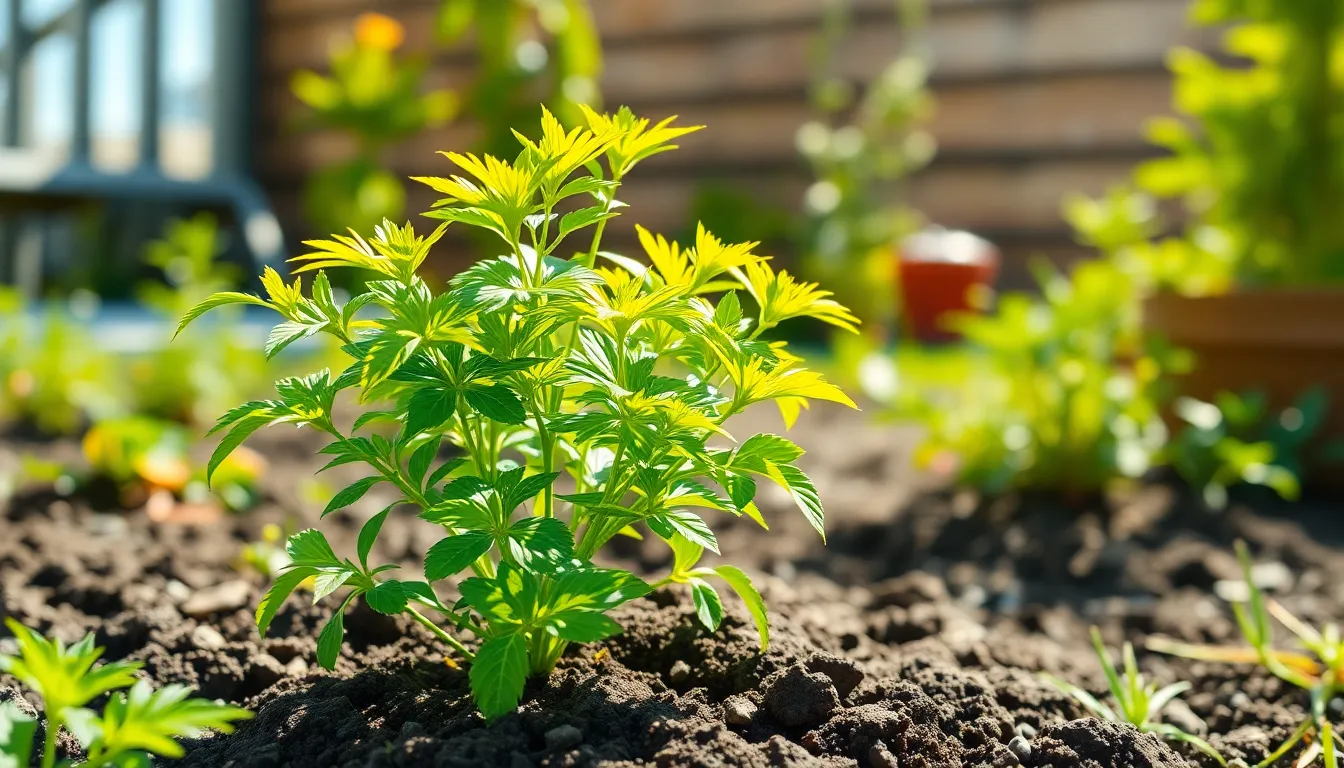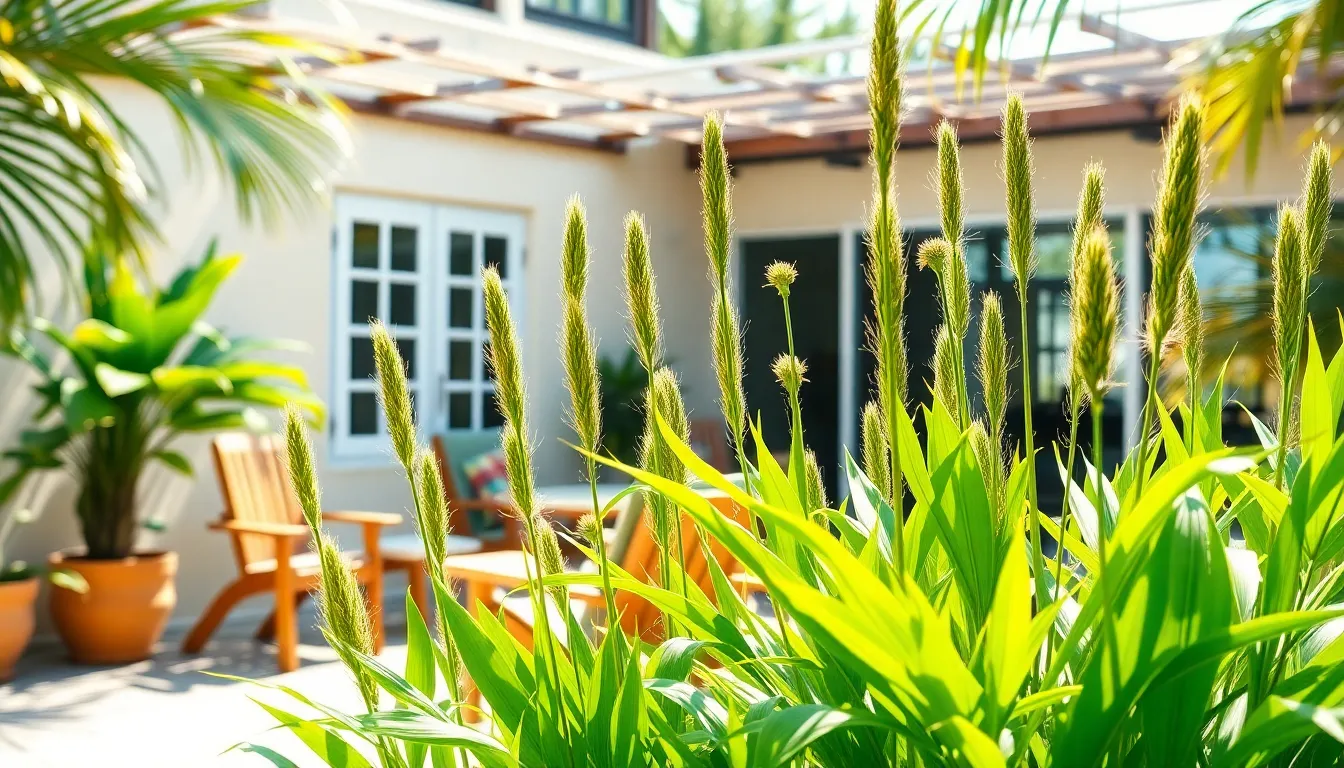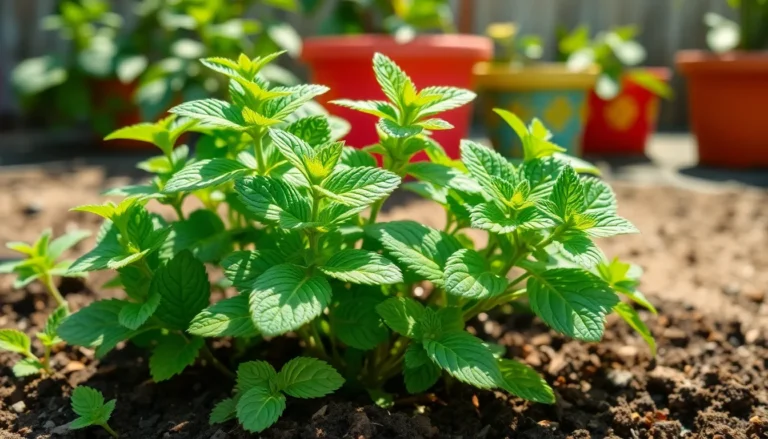If there’s one plant that can make your backyard feel like a tropical paradise while warding off pesky mosquitoes, it’s the citronella plant. This fragrant green wonder isn’t just a pretty face; it’s a natural insect repellent that can turn your outdoor space into a bug-free haven. Imagine sipping lemonade on your porch without swatting away those annoying little creatures. Sounds dreamy, right?
Understanding Citronella Plant
Citronella plants, known for their distinct lemony aroma, thrive in warm climates and contribute to outdoor enjoyment. These plants are not only attractive but also functional, providing various benefits to gardeners and outdoor enthusiasts.
Origin and Benefits
Citronella’s journey began in tropical regions of Asia, where it was first cultivated for its fragrant oil. This oil is widely recognized for repelling insects, particularly mosquitoes. Additionally, citronella plants enhance garden aesthetics, creating a lush and inviting atmosphere. Many homeowners appreciate that, when placed strategically, these plants can help minimize the presence of pests, allowing for more enjoyable outdoor gatherings. Their scent is refreshing, further adding to the appeal. Moreover, citronella oil can be extracted for use in candles, sprays, and other products, increasing its value.
Varieties of Citronella
Different varieties of citronella exist, each with unique characteristics. Citronella grass, recognized as Cymbopogon nardus, is the most common type and features tall, green blades. Another variety, known as Java citronella (Cymbopogon winterianus), is prized for its high oil yield, often used in commercial production. Some cultivators prefer the smaller, ornamental varieties that adapt well to container gardening. Additionally, certain species exhibit varied scents and growth habits, allowing for diverse landscaping options. Each variety plays a role in meeting specific gardening preferences and environmental conditions, showcasing the versatility of this plant.
Planting Citronella

Properly planting the citronella plant ensures its healthy growth and effectiveness as a natural insect repellent. Thoughtful selection of soil and location plays a key role in its thriving condition.
Best Soil Conditions
Citronella thrives in well-draining soil enriched with organic matter. A pH level between 6.0 and 7.0 supports optimal growth. Adding compost or aged manure enhances nutrient content, creating an ideal environment for the plant. Regularly monitoring moisture levels prevents overwatering, as citronella prefers slightly dry conditions.
Ideal Location for Growth
Citronella plants flourish in locations receiving full sun for at least six hours daily. Placing these plants in warm, protected areas promotes robust growth. As tropical plants, they benefit from warmth and protection from chilling winds. For container-grown citronella, select spots that maximize light exposure while allowing for easy mobility.
Watering Techniques
Caring for a citronella plant involves precise watering techniques. These practices ensure the plant thrives while effectively repelling pests.
Frequency of Watering
Watering frequency depends on climate and soil conditions. Generally, it requires thorough watering every 1 to 2 weeks during growing seasons. Monitoring moisture levels is essential, especially in hot weather. Soil should feel slightly dry before the next watering session. Providing less water in cooler months prevents root rot. Adjusting the frequency based on container size is vital, as smaller pots dry out quicker than larger ones.
Signs of Overwatering
Several signs indicate overwatering. Yellowing leaves often appear first, signaling distress. Wilting leaves can occur despite moist soil, indicating root suffocation. Root rot develops in consistently saturated soil, leading to plant decline. If soil remains muddy and smells foul, immediate action is necessary. Reducing watering frequency or improving drainage can rectify the situation. Observing these signs regularly helps maintain plant health.
Sunlight Requirements
Citronella plants thrive with ample sunlight. Proper sunlight exposure fosters healthy growth and maximizes insect-repelling properties.
Optimal Sunlight Exposure
Full sun exposure for at least six hours daily is ideal for citronella plants. Placing the plant in brightly lit areas ensures robust development. Enhancing growth potential depends significantly on sunlight conditions. Sunlight affects the intensity of the plant’s citronella oil production. When grown indoors, positioning near a south-facing window can optimize light intake. Using artificial grow lights can supplement sunlight when necessary, especially in less sunny environments. Gardeners often notice improvements in plant vigor and scent intensity with adequate sunlight.
Adjusting to Seasonal Changes
Seasonal changes require adjustments in sunlight exposure for citronella plants. During summer, protection from intense afternoon sun can prevent leaf scorch. In winter months, reducing exposure to direct sunlight may help the plant acclimate to cooler temperatures. Observing changing light patterns is crucial throughout the year. Using sheer curtains or screens can diffuse harsh light in hotter months while allowing in necessary sunlight. Noticing the plant’s response to varying conditions aids in proper care. Increased light exposure during shorter winter days stimulates active growth as spring approaches.
Fertilizing Citronella Plant
Fertilizing citronella plants enhances their growth and maximizes their insect-repelling properties. Proper fertilization supports lush foliage and robust stems, ensuring healthy plants.
Types of Fertilizers to Use
Organic fertilizers work well for citronella plants. Products like compost, fish emulsion, or seaweed extracts provide essential nutrients while improving soil quality. Slow-release granules also suit these plants, as they deliver nutrients over time without overwhelming the roots. Liquid fertilizers can boost growth when diluted properly and applied during the growing season. Fertilizers with a balanced nitrogen-phosphorus-potassium ratio, such as 10-10-10, promote overall plant health. Using these types ensures that citronella plants receive the nourishment they need to thrive in garden settings.
Timing for Fertilization
Fertilization should occur during the growing season, which typically spans from spring to late summer. Applying fertilizer every 6 to 8 weeks supports vigorous growth. Early spring marks an ideal time for the first application, helping to kickstart the plant’s growth. Regular assessments of the plant’s health can guide the timing of subsequent applications. When the weather warms, the plant actively absorbs nutrients, making this a critical period for fertilization. For those growing in containers, adjusting the schedule based on fertilizer type ensures optimal results.
Pest and Disease Management
Caring for citronella plants involves vigilance against pests and diseases. Managing these threats ensures healthy growth and effective insect repelling.
Common Pests
Aphids frequently invade citronella plants, sucking sap and causing plant stress. Spider mites appear in dry conditions, leading to webbing and leaf discoloration. Whiteflies, another common pest, can cause yellowing leaves and reduced plant vigor. Identifying these pests early helps in effective control measures. Regular inspections for these insects support the overall health of the plants.
Preventative Measures
Utilizing organic insecticides reduces the risk of chemical buildup in the garden. Introducing beneficial insects, such as ladybugs, effectively manages pest populations. Maintaining proper watering encourages healthy plants that are more resistant to pests. Keeping the growing area clean minimizes pest infestations by removing potential hiding spots. Rotating planting areas also disrupt pest life cycles, promoting healthier citronella growth.
Conclusion
Caring for citronella plants not only enhances outdoor aesthetics but also creates a more enjoyable environment free from pesky insects. By following proper planting techniques and providing adequate sunlight and water, gardeners can ensure these plants thrive. Regular fertilization and vigilant pest management further contribute to their health and effectiveness.
With a little attention and care, citronella plants can flourish, offering both beauty and functionality. Embracing these practices will lead to a lush garden that invites relaxation and outdoor enjoyment, all while keeping unwanted bugs at bay.




